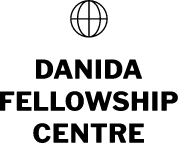Income Generation through Market Access and Improved Feed Utilization: Production of Quality Beef and Goat Meat (IGMAFU-Meat)
Info
Start date: 28 February, 2009 End date: 30 December, 2014 Project type: Larger strategic projects - ENRECA (prior to 2008) Project code: 51-08-LIFE Countries: Tanzania Uganda Thematic areas: Agricultural production, Lead institution: Aarhus University (AU), Denmark Partner institutions: Makerere University (MAK), Uganda Sokoine University of Agriculture (SUA), Tanzania University of Copenhagen (UCPH), Denmark Policy Brief: Policy Brief Project coordinator: Jørgen Madsen Total grant: 7,624,137 DKKProject summary
The objective of the project is to improve the research capacity within livestock production at Makerere University, Uganda and Sokoine University of Agriculture, Tanzania, - and at University of Aarhus and University of Copenhagen, Denmark. This is done through research projects aiming at increasing the income of keepers of cattle and goat in the two countries. The research contains several elements: 1) identification and evaluation of available feeds, 2) improvement of the digestibility of by-products by enzyme treatment (e.g. cellulase), 3) investigations on different combinations and levels of feeding for fattening cattle and goats, 4) slaughtering animals at different weights and degree of fattening, 5) determination of effect of breed and feeding regime on meat quality characteristics, 6) investigate the attitude of the farmers (pastoralists) towards selling animals for fattening to feedlots at different times of the year, and 7) investigate the possibilities for marketing and selling quality meat in Tanzania and Uganda. The project will in this second phase over 4 years, educate 4 students in Tanzania and 4 in Uganda. Most likely 2 PhD´s and 2 MSc’s in each country. Hopefully also Danish students will be attached to the project. From the results of the research recommendations for feeding cattle and goats and for securing production of quality meat will be made, as well as methods for marketing and selling the quality meat.
In Tanzania there is an import of tender quality beef for the tourists, hotels, people working in the mining industry and other willing to pay a high price for tender quality beef, and in Uganda there is an export to the sourounding countries. Therefore, Tanzania can reduce its use of foreign currency by an own production of quality beef. Uganda can increase its earning of foreign currency by increasing it export the the established foreign markets. This substitution of import an increase in export is seen as an opportunity for the Tanzanian and Ugfarmers to increase their income by adding value to their cattle. A lot of information produced by the project is needed to change the situation and to establish and improve the value chains og beef. This being a table containing information on the . available feeds, how to improve the feed value of fibrous feed, the ability of the different breeds of cattle to produce quality beef, how to treat the carcasses at the slaughterhouse, the costs of production, the market situation, the willingness of the cattle owners to sell their cattle and several other factors. These have all been considered in the project and several described in articles and presented at conferences.
Outputs
Completion Report - Summary:
The following results have been communicated to both the local advisors and the
international audience by meetings, articles pamphlets and film and the documentation can be found at the IGMAFU-meat homepage: http://iph.ku.dk/english/research/livepro/igmafu/
- four PhDs and about 15 MSc degrees have been obtained or are close to be finished and interest and capacity to research in and develop tender quality for the local and neighboring country markets have been established among scientists in Tanzania and Uganda.
- it is possible to produce quality beef on the local zebu cattle by feeding them appropriate for a few month before slaughter and eventually keeping the carcasses in a cold room for a few days
- keeping the carcasses in a cold room for a few weeks before marketing make most cattle meet tender
- that local feeds are available for fattening cattle
- that the pastoralists are willing to sell cattle at all times if offered an appealing price
- supplementation of goats has proved to be less profitable if browse feeds are available as they reduce natural search for feeds if they are fed supplements
- the quality of goat carcasses is not improved by supplementation to the same extent as for cattle
- that establishing a value chain in tender quality beef requires involvement of several stakeholders and is beyond what a project with focus on education and training in research can obtain
- that local farmers and pastoralists in cooperation with slaughterhouses have started to use the results of the project and initiated a value chain by producing quality beef.
Go back to all projects
